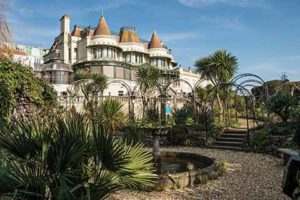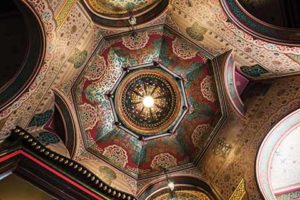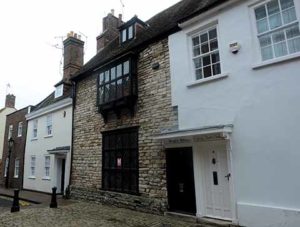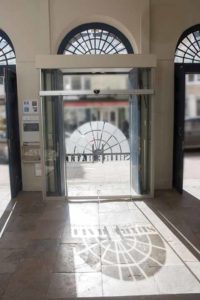Celebrating Dorset’s Architectural Heritage
Louise Bliss goes inside some of the places opened up for Dorset Architectural Heritage Week
Published in July ’18
For twenty-five years East Dorset Heritage Trust with the support of the Institute of Commercial Management have successfully delivered an annual event that brings together all that is good about Dorset’s rich and fascinating architecture, the people behind the wonderful places, the buildings and the stories they continue to tell.
‘The original idea started life as a two-day event back in the 1990s’, explains event manager Ian Utley. ‘The East Dorset Trust involvement commenced primarily as a booking office and
the ballot system was introduced to provide a fairer system.’
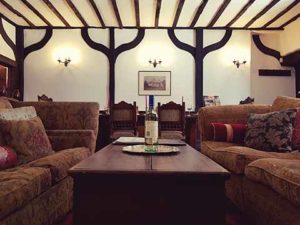
From air raid shelters, private homes, churches, castles, cemeteries to cliff edge towers, there will be opportunities to visit places that are not normally open to the public and even those that are normally open some will be offering a twist with behind the scenes tours. Russell-Cotes Art Museum and Gallery (an extravagant grade Il* listed seaside Villa formally and formerly known as East Cliff Hall) was commissioned by Merton and Annie Russell-Cotes and is one of the buildings offering exactly that, a chance to view areas usually closed to the public. The Russell-Cotes were instrumental in the design. Curator Duncan Walker mentioned ‘whilst this building has the facade of a Victorian building, the inside was very cutting-edge Edwardian.’ It seems Merton was ahead of his time with his vision and technical expectations. Your tour will include a visit to servant quarters and past guest suites. Duncan will give a wonderful insight into how this villa became a museum and how Merton and Annie Russell-Cotes, turned their vision into a generous legacy for the people of Bournemouth and
its visitors. Tall tales, legends and myths included too.
A newbie for this year not only for heritage week but for the county is Shire Hall. An ambitious project, which opened this year, has brought Dorchester’s Historic Courthouse back to life. Shire Hall first opened in 1797, noted in history for the Tolpuddle Martyrs trial which became a key case in the history of the Trade Union movement, is now a museum offering a fascinating educational and fun interactive experience. As well as interesting and inspiring stories this Grade-I listed building is an architectural gem. Director at Shire Hall, Anna Bright said: ‘We are really excited to open and run this wonderful museum… to take on this beautiful building and open it up for everyone to enjoy.’
New to last year was Byngley House. Merchants, mayors, smugglers, hauntings are amongst the tales this house has to tell and rumour has it that Oliver Cromwell held a meeting there. Thomas Byngley (Mayor of Poole 1555) is reputed to have built the property, hence the name. Dating back to 1567 possibly makes this house one of the oldest houses in Poole. Originally detached and larger than its neighbour ‘Mary Tudor’ both were part of large grand building. It had been said that during an extension project in the 1700s the houses were separated. Now a mid-terraced property, the quaint facade deceives you to its size as on entering a generous space transports back to another world with its grand fireplace and exposed oak beams. One of last year’s visitors commented ‘what a beautiful house, so well preserved, yet brought up to modern standards without diminishing the historical aspects’. Current owners Julia and Paul Bradley initially had a vision of Byngley being their home, yet the house had other ideas. Currently it is an enchanting place to stay and enjoy a 16th century experience. Highlights of this special house include a number of original features, one of them being the solid oak stairwell, believed to be one of the few remaining in England of its period, encased within the eight returns that weave through the floors is a 2ft 6 space that housed a dumb waiter, today it is cleverly used for storage.
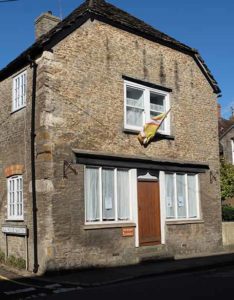
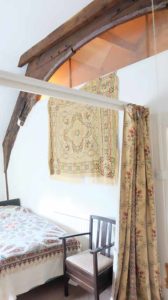
Inside and outside Silk Hay, Hilary Townsend’s Stalbridge house which is opening up for DAHW this yea
Julia and Paul have injected a huge amount of time and passion into the house respecting its history and are keen to share it. After opening their doors for Heritage week Julia Bradley said, ‘I was overwhelmed by the public’s love for the cottage and passion. Feelings that I thought I only had were felt by others. How moving! Paul and I bought the house with our hearts, not our head, and at times questioned stupidity! We knew we wanted to keep the history alive and speaking to so many enthusiasts at DAHW we knew we’d done right. We really ‘are’ preserving a piece of Britain’s amazing history, and that feels good.’
The Bradley’s are very complimentary about the work of previous owner Brian Nation who carried out repairs and restoration to the property in the 1960s. Last year during their non-profit open days the Bradley’s raised £762 for Target Ovarian Cancer and any donations this year too will go to Target. The charity, Julia said ‘was chosen to raise as much awareness to symptoms as we possibly can, constantly’.
When Byngley House isn’t occupied by guests the Bradley’s open its doors for Dorset Architectural Heritage Week and Christmas is celebrated with a magical carol singing concert outside in Market Place on the charming cobbled streets of which have witnessed hundreds of years of historical moments with mulled wine in the house after for the carol singers.
Silk Hay has proved to be a popular event during Heritage week over the years and it is thanks to owner Hilary Townsend. Through her steely determination over thirty years she has fought to protect and restore this extraordinary building and kindly welcomes people into her home so they can enjoy, study and marvel at it.
The house was purchased by Hilary’s mother in 1962. Hilary’s Silk Hay adventures commenced in the 1970s when she took on the responsibility of one of the oldest buildings in Stalbridge. It was the fortuitous meeting with Miss Pamela Cunnington (a then Planning Officer at Dorset County Council, who also happened to be specialist in medieval vernacular buildings) that opened doors to discovering its history and the reason why Silk Hay is a significant historical home. Hilary talks about the house with unwavering passion and enthusiasm and how through the work of specialist builders they have been able to peel away at the layers of history to expose some of the buildings finest features, including a curing cupboard, original Tudor fireplace and a most impressive elm arch brace, which helps date it back to the 1400’s. Anyone lucky enough to visit Silk Hay will witness Hilary delight in telling stories of what a Victorian cowboy builder did to the staircase, amongst other humorous tales. Upstairs for the house came in subsequent years as chimneys were developed. Focal points upstairs include a frame showcasing interesting plaster made from cow hair and hay and a ceiling that houses a leylight so the original roof detail can be viewed.
A crude sketch of a man in armour on re-used, possibly 12th-century stones was discovered downstairs. ‘Uncovering these stones was one of my highlights,’ said Hilary when recalling memories of her journey, which have been recorded her in her book Silk Hay – One Woman’s Fight for Architectural Heritage. ‘They are believed to have come from the Commanderie of the Knights Templar at Templecombe. The man in armour is thought to be a Crusader Knight.’
A tour of this house will lead you to observe a wonderful piece of history and you will find out how the house got his name. A house with a heart is how Hilary describes it. The revision of Pevsner’s guide to old houses in Dorset, published in May this year, now includes Silk Hay.
Blandford Forum’s Town Museum is an educational haven, housing centuries of the town’s history. One of its exhibitions is about Alfred Stevens (1817 – 1875), a local man noted for his work as a talented sculptor and is host to artist of the month which showcases local talent. A museum which is free to walk around is supported by a dedicated team of volunteers. Dr Sylvia Hixson Andrews, Director of the Blandford Museum explains the reason why she is so passionate about the museum and why it’s a must to visit. ‘The Blandford Town Museum is an essential starting point for visiting the Blandford Area. Starting with the prehistory of the area, moving on into Roman and Medieval times and leading into exhibitions on the last 400 years of Blandford life, the exhibitions tell the story of a remarkable town.’
This special event celebrating Dorset’s impressive architecture has evolved over time and has continued to deliver amazing experiences for people and visitors to Dorset through the hard word and dedication of many people.
